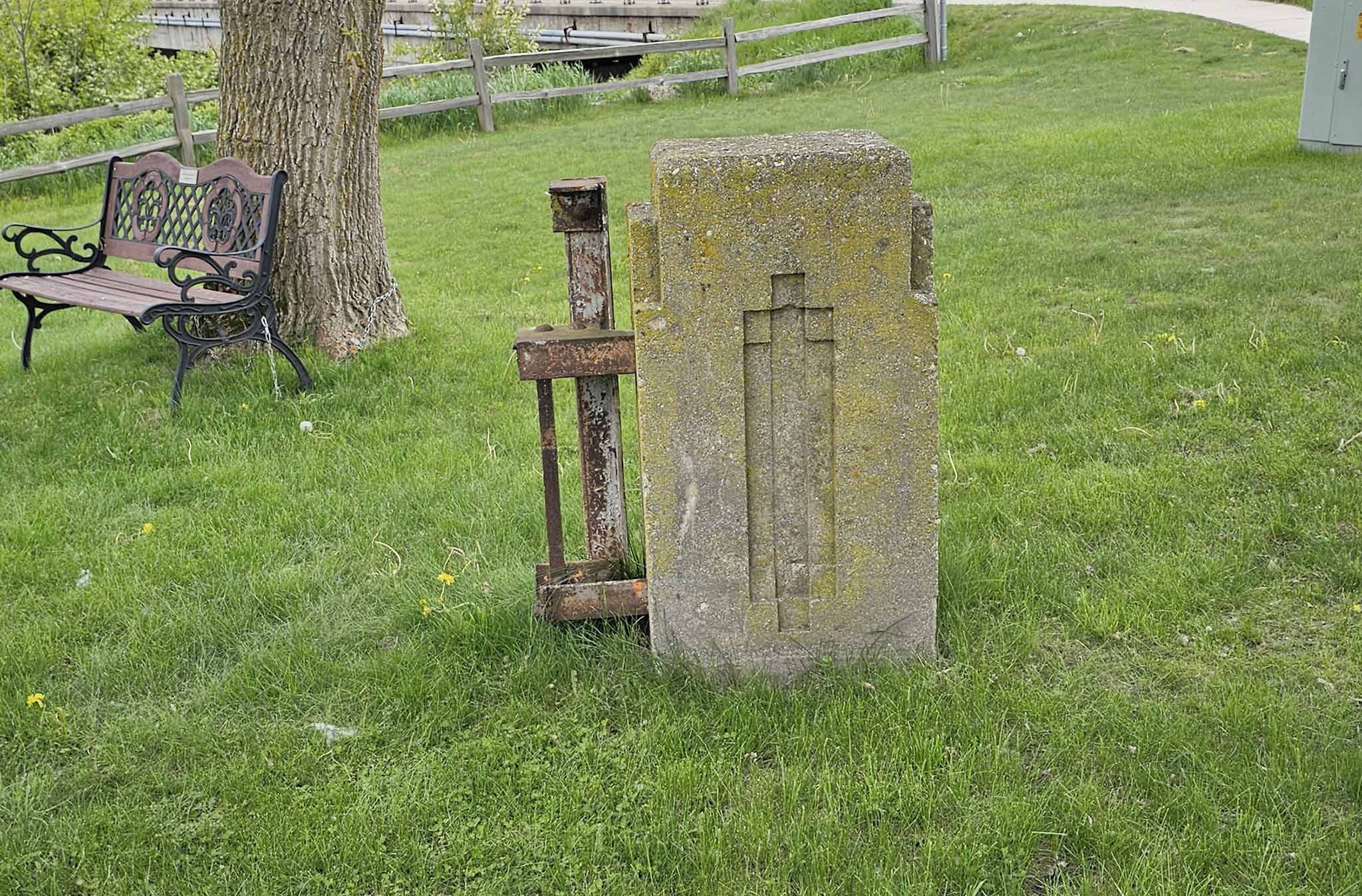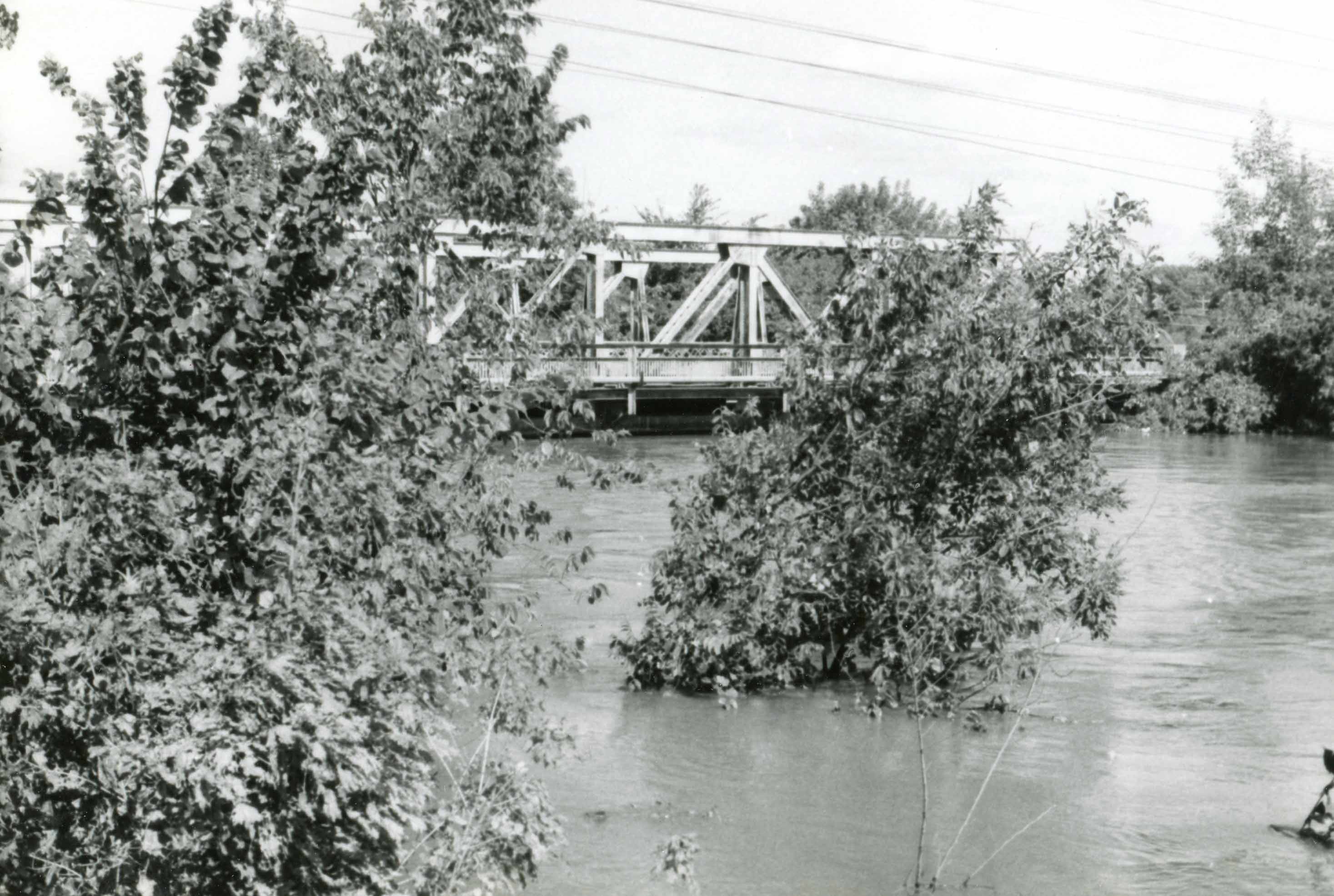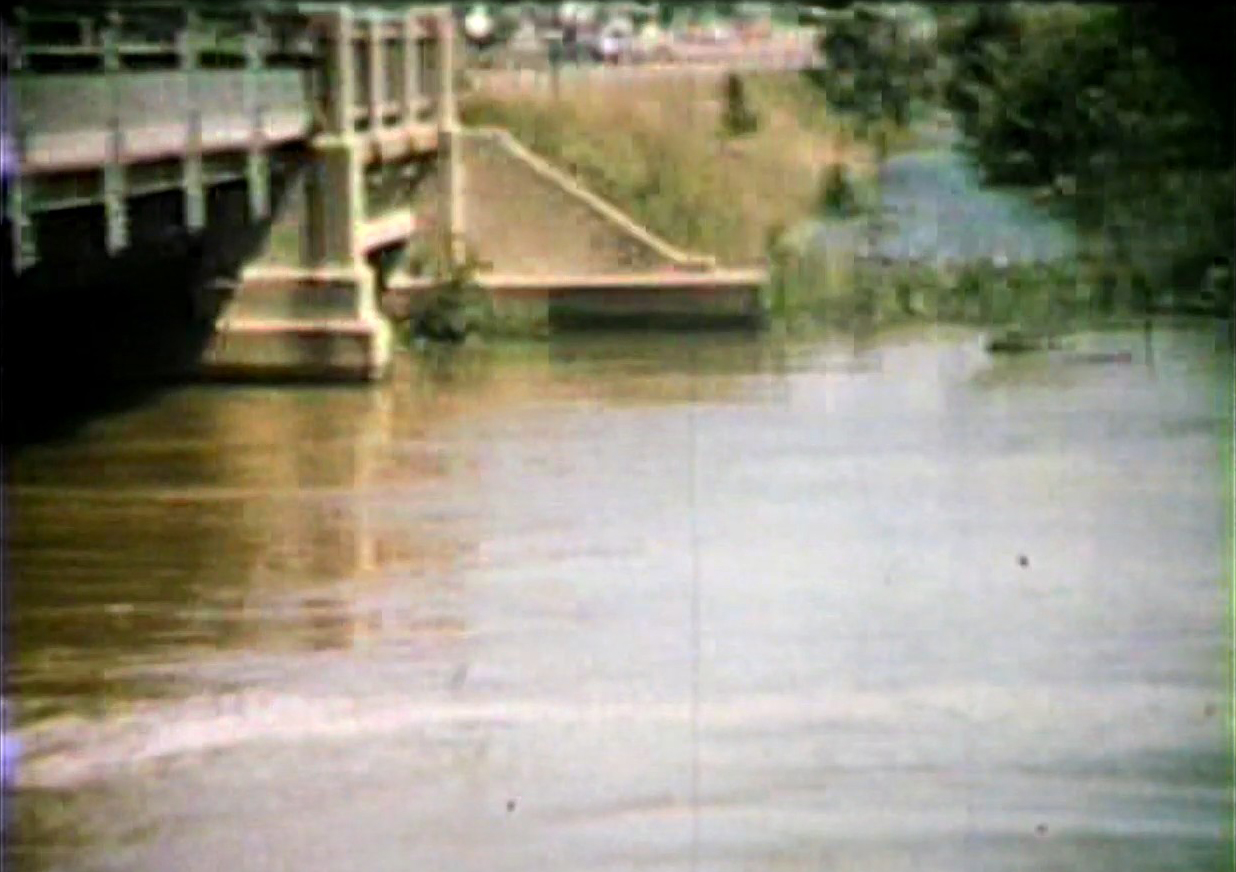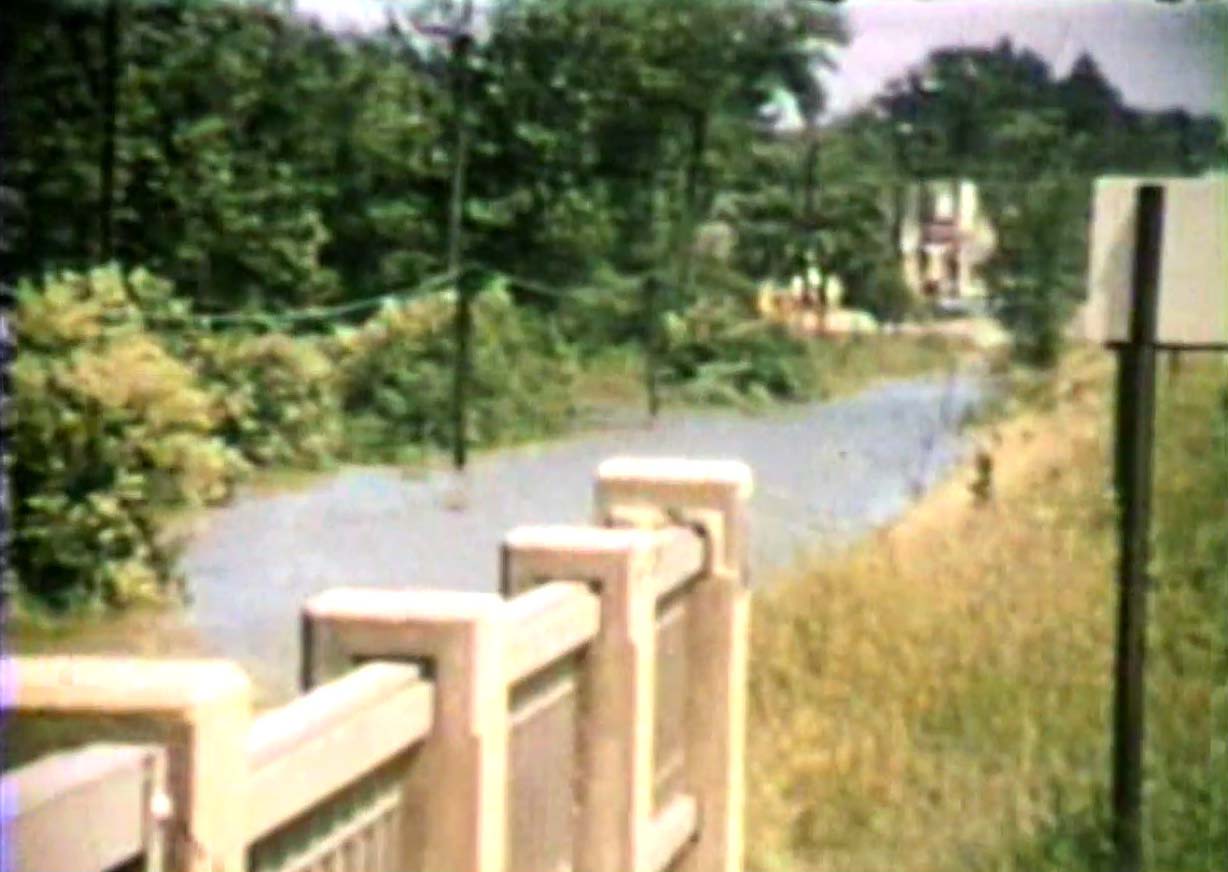
Home > Virtual Exhibits >
by Ron Hughes
March 29, 2025

As if it had been there for decades.
In the summer of 2019 people noticed that a rather old artifact mysteriously appeared on the grounds of the Sanford Centennial Museum as if it had been there for decades. Due to its art deco style and proximity to the Tittabawassee River, most people assumed it was a part of an old bridge that spanned the river and was abandoned in the distant past, right where it’s currently planted. Well, this is partially true.
The item is a concrete handrail pedestal or pillar. It was a part of the roadway bridge that spanned the Tittabawassee on old US-10 that is now known as N Saginaw Road in Sanford. According to the Midland County Road Commission, the plans for this bridge were approved in 1930.
Bids were requested for the substructure for bridge one of 56-8-2 contract 2 F.A. 182F in the December 17, 1931, Midland Republican newspaper.
More detailed information was published in the same newspaper for bids on the superstructure on June 16, 1932. Bridge—with an overall length of 198 feet, 7 ½ inches in Midland County, Federal Bridge One of 56-8-2 contract…sealed proposals will be received…until Wednesday, June 29, 1932, for constructing a bridge superstructural located on US-10…crossing Tittabawassee River… The superstructure consists of two 35-foot approach spans and one 128 foot 7 ½ inch steel truss span with reinforced concrete floor on the approach spans and welded battle deck steel floor on the truss span, with a 30-foot roadway and two 9 foot 3 ½ inch sidewalks on the approach span, and two 4-foot sidewalks on the truss span. The angle of crossing is 90 and the bridge is on a 0.0% grade…contract number 4 is to be completed on or before October 15, 1932.
The June 30, 1932, issue of the Midland Republican newspaper announced that bridge and road jobs had been let for $133,030. The R.C. McMahon Company of Detroit would build the 2 bridges after bidding $20,020 for the Tittabawassee River bridge, and $11,415 to build the Salt River bridge. Thomas McNally of Saginaw would build the 3.8-mile concrete roadway at Sanford. McMahon was the low bidder to build the 5-mile roadway between Coleman and North Bradley.

Sanford Centennial Museum archival photograph of the 1932 Tittabawassee River bridge believed to be taken during the flood of 1986.

This is a screen capture from an undated home movie in the museum’s archive showing the concrete handrail pillars on the 1932 Tittabawassee River bridge.

Another screen capture from the same home movie showing a different perspective of the concrete handrail pillars.
The years passed and the Midland Daily News became the successor to the Midland Republican, and time took its toll on the Tittabawassee bridge. The demise of the bridge was chronicled in the 1980s issues of its publication:
December 10, 1981: Fall repairs found the bridge deck in worse shape than expected. The steel structure that supports the bridge can handle normal loads. Span closing called warranted. The critical bridge committee will not meet until mid-1982 and there is an existing long list of bridges to replace, and money is very tight. Funds might be available in about 2 years. The Sanford Village Council took no action since its share of the bridge replacement costs would be a financial hardship for the municipality.
November 13, 1982: Michigan Department of Transportation informed the Sanford village board that the bridge over the Tittabawassee River on Saginaw Road is scheduled for repair or replacement. The state has set aside $600,000 for the project. The bridge was third on a critical bridge list compiled by the MDOT.

Repairs to the Saginaw Road bridge over the Tittabawassee River in Sanford will be delayed despite engineering reports indicating it is deteriorating. (Daily News photo by Terry L. Tanner)
[Originally published in the Midland Daily News February 19, 1983, Page 5. This same picture was used on January 8, 1988, with the caption, “50-year-old bridge will get new look when much
(of the structure) is replaced this summer.”]
February 19, 1983: Sanford votes to delay bridge repairs—village application for state funding misplaced during transfer of document between the three clerks the village has had since December. The bridge is not a great hazard but will continue to deteriorate. Closing the bridge could force Sanford businesses to close.
January 8, 1988: Several bridges to be replaced in 1988 in Midland and Clare Counties. The Saginaw Road bridge over the Tittabawassee River in Sanford was built in mid-1930s but the truss-supporting arch above the bridge’s deck was brought from another site and is even older. The existing piers and abutments will be reused but everything else will be replaced. Work will be done in stages to keep the bridge open.

“CUT UP – Jim Farlow of St. Louis cuts the roadbed superstructure of the Sanford Bridge into 500-pound pieces for transportation from the site on Old US-10 on Tuesday. Central Michigan Iron
and Metal Co. is contractor for the scrap metal. Work on replacing the structure is expected to be completed later this summer. (Daily News photo by Glenn M. Roberts)” Originally published in the
Midland Daily News, July 20, 1988, Section A, Page 3.
It was during this construction work that the late SHS members Harry Woods and John Billingsley convinced the crew to set aside one of the concrete handrail pillars for the museum. It remained in the weeds along the riverbank until the summer of 2019, or 31 years later, when John Billingsley, Dave Haskin, and others were building the pavilion for the big wheels display adjacent to Saginaw Road.
The pillar is approximately 8 feet long and weighs about 2500 pounds. Dave used his tractor backhoe to pull it off the riverbank and set or buried about 4 feet of it into the ground. He estimates its original location was about 60 feet south and 90 feet east of its present position.
Special thanks to SHS members Rick E. Goodwin and Alan David for sharing their research materials for this article.